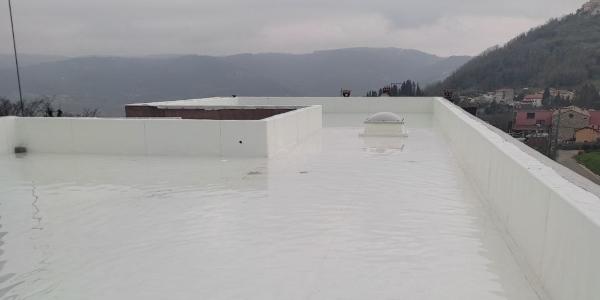Extensive Green Roofs Top Off the New Minneapolis Central Public Library

Green roof specified to reduce storm water runoff into Mississippi River; sets example for Minneapolis sustainable design.
The five-story Central Public Library of Minneapolis, MN is an architectural benchmark for Mid-western urban landscapes and sets an example for sustainable building design. The new MN Central Public Library features an extremely energy-efficient design, complete with three green roofs, and is being billed by the city as an architectural jewel that will support a vibrant downtown culture.
The Kestrel Design Group (Landscape Architect) was faced with the challenge of creating an extensive green roof that would retain storm water runoff, while supporting the high-tech needs of modern information hub and preserving the library’s fragile historical collections. For help on the project’s most vital feature, The Kestrel Design Group selected Henry Company based on their proven track record for providing high performance green roofing systems.
The green roof infrastructure proposed by Henry Company and The Kestrel Design Group meets both the Environmental Protection Agency (EPA) and the Mississippi Watershed Management Organization’s storm water mandates. The importance of managing storm water runoff into the Mississippi River from the downtown Minneapolis development was a critical design component in the specification of the Henry Green Roof for the new building.
The Central Public Library’s green roof system employs two water management systems, working together, to retain the storm water that reaches the property to be captured and reused. First, directly beneath the vegetation across the entire growing platform, the green roof uses a Henry DBR Root Bloc System. This water management system captures a portion of storm water in small plastic cups, which then re-hydrates the green roof by evaporating upwards through the soil. Water in excess of what the subterranean plastic cups can hold is channeled into a secondary water management system.
This secondary water system collects excess storm water in below grade water storage tanks. The water collected in these tanks is then pumped back onto the roof where the rooftop gardens and streetscape are automatically watered with a slow-drip watering system.
The Central Public Library’s three green roof systems cover more than 18,560 square-feet, with an extensive vegetation design that includes prairie plants and hearty indigenous vegetation that thrives in Minnesota's harsh climate. The green roof landscaping grows in a specially designed ‘light’ growing medium and with two water management systems, very little maintenance is required. The landscape design is intended to connect the culture of the community with nature. A variety of plant species were chosen to form a changing wave of colors across the roof during different seasons, thus reflecting the Mississippi River’s strong influence on Minneapolis and Minnesota communities.
Not Just a Reduced Watershed Project
The benefits anticipated for the green roofs on the new library go beyond storm water management and also include:
- Reduced Building Energy Consumption
- New Green Space in Downtown Minneapolis
- Reduction of Urban Heat Island Signature
- Improved Internal Air Quality
- Increased Longevity of the Library’s Roof System
- Establishes a Model for Clean and Sustainable Building Design in Minneapolis
The Henry Company flagship green roof waterproofing product (Henry 790-11) specified in the Central Public Library Project is a hot applied, rubberized asphalt waterproofing membrane. 790-11 protects more than 1-million sq-ft of green roofs, plazas, foundations walls, and parking garages throughout North America and Europe.
The Henry 790-11 Green Roof Waterproofing System is backed by ISO registration, UL Class A fire rating, CCMC approval and LARR listing. The Henry 790-11 system is applied by a network of Henry trained and certified contractors to ensure proper installation and ‘piece of mind’ for building owners.
Henry Company is the leading innovator of Building Envelope Systems and understands the principals of integrating Air and Vapor Barrier, Roofing and Waterproofing Systems to ensure superior building performance.
From rooftop to foundation, Henry professionals offer designers, contractors and building owners a combination of technical experience and a commitment to provide quality products. For more than 70-years, Henry Company has been the trusted source for complete Building Solutions.
Call 800-598-7663 for information and visit here for more information about the Henry Company.
Editor’s note: This article was first published on Henry Company’s blog and can be viewed here.























Comments
Leave a Reply
Have an account? Login to leave a comment!
Sign In